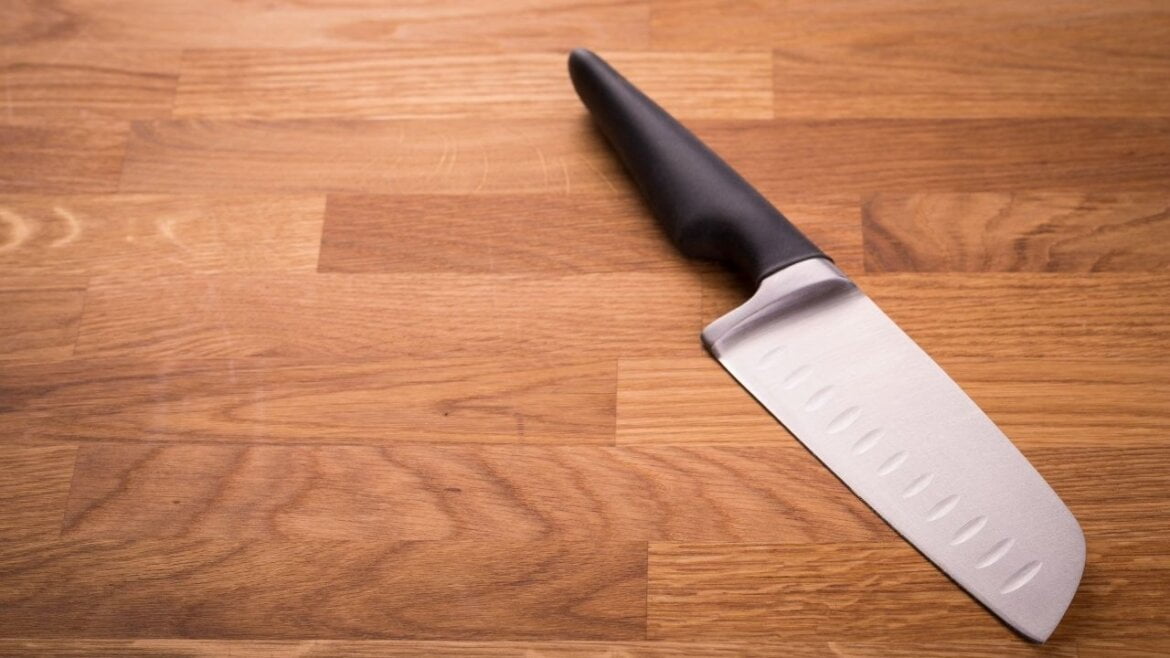Like its more well-known cousin, the chef knife, the Santoku knife is a highly adaptable workhorse. Most Japanese blade styles, which can be traced back to the mid-20th century, are far older than the santoku knife. It was originally designed as a kitchen utility knife for home cooks, but it has become a popular item produced worldwide. “Santoku” means “three virtues,” which can be read in two ways:
- As a reference to its capacity to masterfully slice, dice, and cut up meat, fish, and vegetables;
- As a nod to its capacity to masterfully slice, dice, and cut up meat, fish, and vegetables.
No matter how you use it, this Japanese-style knife will quickly become a household staple.
Before Purchasing a Santoku Knife
Before deciding whether you should buy santoku knife, you should familiarise yourself with the differences between Santoku knives and chef knives. While both are mid-sized, the Santoku knife is the smallest compared to bread or carving knives, which can be significantly larger or smaller. In addition, a unique feature of this knife is its blade, which is somewhat different: To avoid the blade rocking that occurs when a Western or European design knife blade is used, it has a flat cutting edge that isn’t sharp at the tip.
Tips for Buying and Using Santoku Knives
Having a Santoku knife in your kitchen is a must-have item that you’ll use frequently. Here are a few more things to consider when you buy Santoku knife:
Observe a knife’s manufacturing and care guidelines to extend its life.
Like every other tool in your cabinet, knives have various maintenance requirements depending on their design, from the blade to the handle material. For example, some are dishwasher-safe, while others should never be left out in the kitchen sink. Observe the guidelines.
If you already own a Santoku knife, you may want to consider adding another knife to your arsenal.
If you have a handful of chefs in your kitchen, having two Santokus rather than one might be more convenient for everyone. In the case of a dinner party guest with limited knife abilities but a strong desire to pitch in, this could mean a low-cost backup or two various-sized Santoku knives to suit relatives with diverse hand sizes and grip strengths.
Do not rely on your Santoku knife for everything, despite its outstanding dexterity.
Keep butchering to a minimum. A Santoku blade, for all its versatility, is not intended to make direct contact with bones. Keep in mind that a paring knife is the best option when it comes to more delicate tasks.
The Criteria for a Great Santoku Knife
Choosing the most incredible knife is a matter of personal preference; thus, there isn’t a single answer to the question. Moreover, other people’s perceptions of what’s appropriate may differ significantly from your own. Even so, there are a few standards you can establish when you buy santoku knife.
First and foremost, a santoku knife should be razor-sharp right out of the package. The more time a knife gives the user before it needs to be sharpened, the greater control the user will have over the situation.
And lastly, a santoku knife should be somewhat light and easy to hold. Regardless of how well-developed one’s forearms are, anyone can use a santoku knife because it is lightweight and agile.
